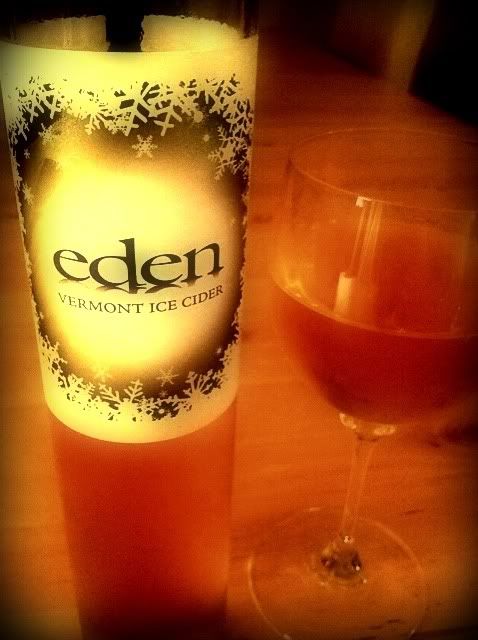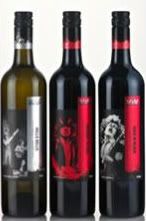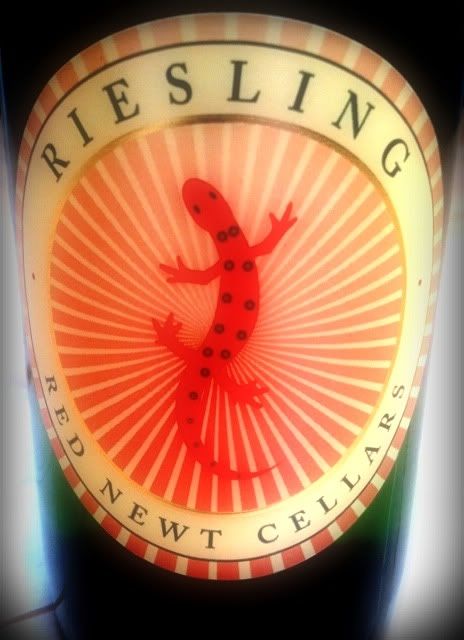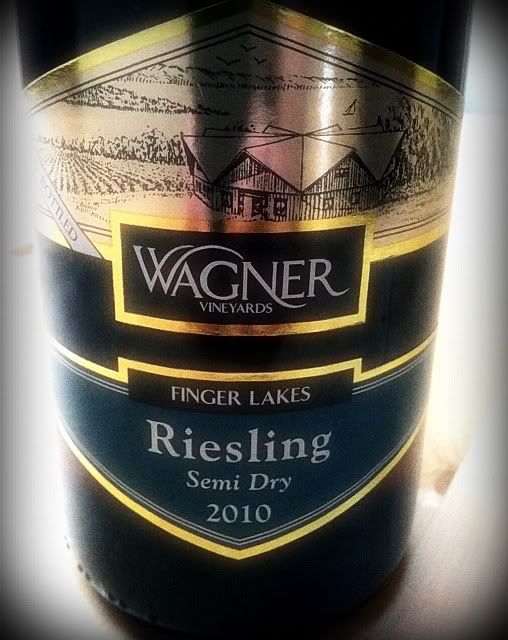Il Fornaio in Beverly Hills is a spot I hit every now and then for lunch. They serve good Italian food and have a wine list that's not too shabby either. It's brief, but there always seems to be something interesting on it that catches my eye.
I generally opt for an Italian wine at Italian restaurants, but this time I went with a California wine, although it's made with an Italian grape. There are a smattering of wineries in California that deal with Italian grape varieties, and Uvaggio is one of them.
Uvaggio, the word, is Italian for the French termencepagement. It is used to describe the varietal makeup of a vineyard. Uvaggio, the winery, is a two-man show based in Lodi, California. The Cal-Italia duo grow Italian grape varieties there.
I went with their 2009 Vermentino. It's $8 by the glass. The wine is made from Lodi fruit, 67% from Bella Vigna Vineyard and 33% from Gayla's Vineyard. Produced for the most part in a tank, about 10% of the wine was aged in neutral oak. It has a low, low 11.1% abv number - perfect for lunch.
Straw is the resonant hue in the glass, and the nose features a strong minerality with aromas of pear and a faint tropical reference. On the palate, a big splash of savory fruit makes an impression, but it seems to lack acidity. The taste is great, though.
I paired it with a margherita pizza and a spinach salad with bacon. The acidity simply couldn't match up with either the pizza or the bacon, but it did nicely with the spinach alone, and with a crust of bread and olive oil. A little more acidity would have made this nice sipper a perfect match with food.
Uvaggio plays with several other Italian grapes, and I'm interested enough to want to try their Moscato, Barbera, Sangiovese and Nebbiolo.
Follow Randy Fuller on Twitter
I generally opt for an Italian wine at Italian restaurants, but this time I went with a California wine, although it's made with an Italian grape. There are a smattering of wineries in California that deal with Italian grape varieties, and Uvaggio is one of them.
Uvaggio, the word, is Italian for the French termencepagement. It is used to describe the varietal makeup of a vineyard. Uvaggio, the winery, is a two-man show based in Lodi, California. The Cal-Italia duo grow Italian grape varieties there.
I went with their 2009 Vermentino. It's $8 by the glass. The wine is made from Lodi fruit, 67% from Bella Vigna Vineyard and 33% from Gayla's Vineyard. Produced for the most part in a tank, about 10% of the wine was aged in neutral oak. It has a low, low 11.1% abv number - perfect for lunch.
Straw is the resonant hue in the glass, and the nose features a strong minerality with aromas of pear and a faint tropical reference. On the palate, a big splash of savory fruit makes an impression, but it seems to lack acidity. The taste is great, though.
I paired it with a margherita pizza and a spinach salad with bacon. The acidity simply couldn't match up with either the pizza or the bacon, but it did nicely with the spinach alone, and with a crust of bread and olive oil. A little more acidity would have made this nice sipper a perfect match with food.
Uvaggio plays with several other Italian grapes, and I'm interested enough to want to try their Moscato, Barbera, Sangiovese and Nebbiolo.
Follow Randy Fuller on Twitter



 Bodegas La Remediadora
Bodegas La Remediadora





 Eden Cidre de Glace du Vermont Calville Blend 2010Eleven different apple varieties go into this blend: Empire, Macintosh, Roxbury Russett, Calville Blanc, Cox's Orange Pippin, Hudson's Gem, Ashmead's Kernel, Esopus Spitzenberg, Black Oxford, Belle de Boskoop and Reinettes. Whew! This cider has a 10% abv number and 15% residual sugar.
Eden Cidre de Glace du Vermont Calville Blend 2010Eleven different apple varieties go into this blend: Empire, Macintosh, Roxbury Russett, Calville Blanc, Cox's Orange Pippin, Hudson's Gem, Ashmead's Kernel, Esopus Spitzenberg, Black Oxford, Belle de Boskoop and Reinettes. Whew! This cider has a 10% abv number and 15% residual sugar. Eden Cidre de Glace du Vermont Northern Spy 2009This one is a single-variety ice cider made from 100% Northern Spy apples and aged in French oak for a year. The color is extremely rich looking, darker than the unoaked cider. It looks quite like bourbon in the glass and it smells like a holiday apple pie, with that baked apple aroma drenched in cinnamon and nutmeg. Much oak nuance graces the palate, too. It's viscous, like the unoaked, but a bit more tart on the finish. I find it quite complex with maybe a bit more of a "grownup" taste. They advise you pair it with cheddar or creamy blue cheese.
Eden Cidre de Glace du Vermont Northern Spy 2009This one is a single-variety ice cider made from 100% Northern Spy apples and aged in French oak for a year. The color is extremely rich looking, darker than the unoaked cider. It looks quite like bourbon in the glass and it smells like a holiday apple pie, with that baked apple aroma drenched in cinnamon and nutmeg. Much oak nuance graces the palate, too. It's viscous, like the unoaked, but a bit more tart on the finish. I find it quite complex with maybe a bit more of a "grownup" taste. They advise you pair it with cheddar or creamy blue cheese.













 Anthony Road Wine Company
Anthony Road Wine Company Dr. Frank's Vinifera Wine Cellars
Dr. Frank's Vinifera Wine Cellars Fox Run Vineyards
Fox Run Vineyards Ravines Wine Cellars
Ravines Wine Cellars Red Newt Cellars
Red Newt Cellars Wagner Vineyards
Wagner Vineyards